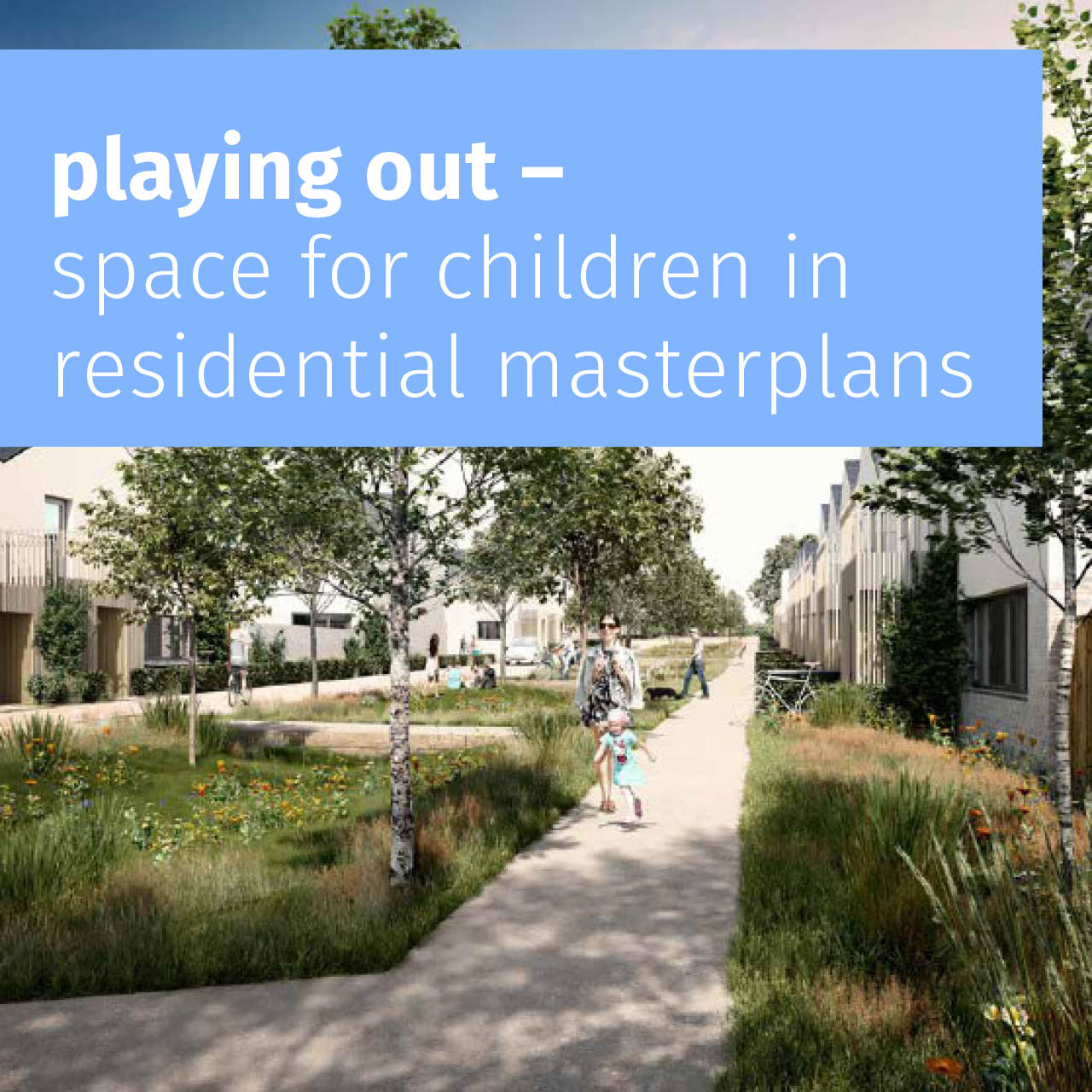
As children become mobile then play spaces become a fixation, plays spaces and swimming pools (and later forests or woods). The scale of neighbourhood activity grows as children do. If your children are happily amused, you know they are spending their time well, then the chances are you’ll be amused too. A recent review of the evidence of the benefits of free play reported that playing has a wide range of benefits for children including; cognitive development, physical health and emotional wellbeing, social development and resilience. The availability of play space points to wider benefits for families also: ‘Parents associate playing in playgrounds with family well-being, and those who live near playgrounds and visit often report higher levels of family well-being’ (1).
From between five to ten years of age children want to assert their independence and play out with friends somewhere near to their homes. For a few months the boundaries of home are stretched into the street and there are difficult decisions to be negotiated. It is helpful initially if there is space apart that is still near enough to be supervised. So, designers need to consider how to provide a range of incidental play spaces as part of the landscape of any new neighbourhood, such as well functioning home zones and slivers or margins of spaces that can be safely purloined. The Playing Out campaign grew out of a resident led project in Bristol that aims to encourage and support street play across the UK and enable every child the freedom to; ‘play actively and independently in front of or near their own home’ (2). Playing Out is also supported by Play England.
On foot links to bigger and wilder spaces are important for children as they gain independence. By ten they may want to go further afield to play or go on an errand to the shops to experience the wider world for themselves. Even better a day out in the woods with backpacks. A study for Save the Children found that children enjoyed spaces that might not be considered by design teams: “The ‘wild’ areas, which included the fields, woods, ruins and the local bing (an old coal slag heap), were highly valued by the young people and were places where they went climbing trees, biking and to generally socialise and play” (3).
Finding opportunities for these three scales of activity for parents and children: of the street, the neighbourhood and connection to wild spaces beyond is a good test of a residential or mixed-use masterplan. It is another way of asking the Building for Life question two: “Does the development provide (or is it close to) community facilities, such as shops, schools, workplaces, parks, play areas, pubs or cafés?”
- The Play Return: A review of the wider impact of play initiatives, Tim Gill for the Children’s Play Policy Forum, 2014 – www.rethinkingchildhood.com
- http://playingout.net/– http://www.playengland.org.uk/our-work/projects/street-play.aspx
- Outsiders, Children and Young People and Their Use of Public Space, Susan Elsley, 2004.
… … …